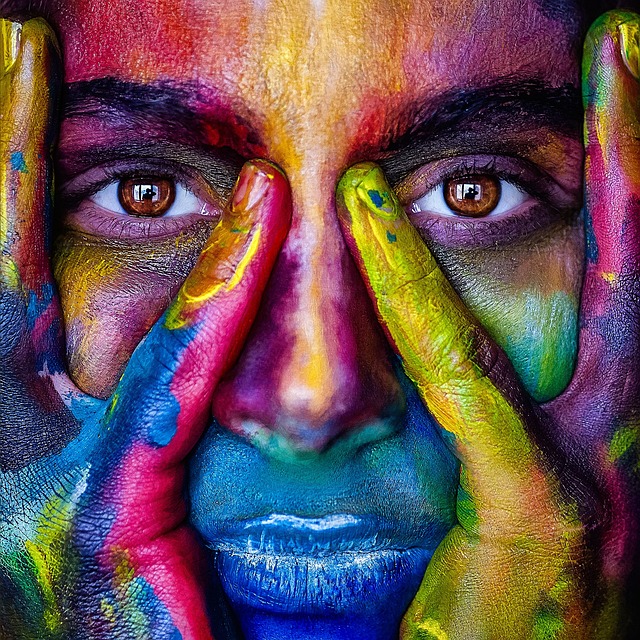Transformative Exhibitions: The Power of Art Museums
Art museums are more than mere repositories of treasured artifacts and masterpieces; they are vibrant spaces where culture, history, and emotion converge to create transformative experiences. A well-curated exhibition has the potential to challenge preconceived notions, inspire creativity, and evoke deep introspection. Through various artistic expressions, art museums serve as platforms for dialogue, learning, and community engagement. In this article, we will explore the multifaceted power of art museums, highlighting their ability to influence individuals and societies alike.
The Role of Art Museums in Society
Art museums play an integral role in society by preserving cultural heritage, providing educational resources, and fostering a sense of community. They serve as guardians of history, ensuring that the narratives of various peoples and cultures are recorded and remembered. By collecting and exhibiting art from diverse origins, museums offer a glimpse into the values, beliefs, and experiences that shape different societies.
Moreover, art museums are essential educational institutions. They provide invaluable access to knowledge for people of all ages. Through guided tours, workshops, lectures, and engaging exhibitions, museums educate visitors about art history, artistic techniques, and cultural contexts. This educational mandate is particularly significant in an era where understanding diverse perspectives is crucial for fostering tolerance and empathy.
The Concept of Transformative Exhibitions
Transformative exhibitions are those that transcend traditional artistic display to provoke thought and encourage personal reflection. Unlike standard exhibitions that might focus primarily on aesthetic appreciation, transformative exhibitions stimulate intellectual and emotional responses. They often confront pressing social issues or reflect major cultural movements, challenging visitors to engage with complex themes and consider their own experiences and beliefs.
Characteristics of Transformative Exhibitions
While each transformative exhibition is unique, several key characteristics set them apart:
- Interactivity: Many transformative exhibitions invite visitor participation, encouraging people to engage not just as observers but as active participants. This may include interactive art installations, participatory workshops, or even digital experiences that allow for user input.
- Multisensory Experiences: Transformative exhibitions often employ multiple senses to create an immersive environment. This can include soundscapes, tactile interactions, and even olfactory triggers that enhance emotional engagement.
- Cultural Reflection: These exhibitions often address contemporary issues or themes that resonate with current societal debates—such as identity, inequality, climate change, or the impacts of technology. They encourage viewers to reflect on their roles within these narratives.
- Collaboration with Artists: Transformative exhibitions frequently involve direct collaboration with artists. By engaging artists in the conceptualization and execution of the exhibition, museums can introduce fresh perspectives and innovative approaches to thematic exploration.
Case Studies of Transformative Exhibitions
To illustrate the power of transformative exhibitions, let’s examine a few prominent examples from leading art museums around the world:
The Museum of Modern Art (MoMA) – “The Museum as Hub”
MoMA launched “The Museum as Hub” initiative to provide a global platform for contemporary art. The exhibition series showcased the work of both established and emerging artists, emphasizing collaboration and cultural exchange. By creating a network of museums—each reflecting the local community’s experiences—the project broke away from the traditional monolithic narrative often found in art exhibitions. This approach not only democratized access to art but also encouraged cross-cultural dialogue among diverse audiences.
The Tate Modern – “The Radical Eye”
The Tate Modern’s “The Radical Eye” exhibition, which featured a collection of modernist photography from the Sir Elton John Collection, aimed to challenge conventional storytelling through visual art. By focusing on the intersection of identity, sexuality, and politics, this exhibition invited viewers to reevaluate their understanding of identity and the ways it is portrayed through photography. The impact of such exhibitions extends beyond the gallery walls, prompting discussions and reflections in social contexts.
The Getty Center – “The Horse and Rider”
The Getty Center’s “The Horse and Rider” exhibition explored the enduring relationship between humans and horses across various cultures and historical periods. By bringing together artworks, artifacts, and multimedia presentations, the exhibit told a complex story about the symbolic and practical roles of horses through history. It effectively bridged the gap between various cultural narratives and showcased the shared experiences of human-animal relationships, creating an opportunity for visitors to reflect on their connections to nature and the living world.
The Emotional Power of Art
The emotional resonance of art cannot be underestimated. Transformative exhibitions often utilize evocative themes and powerful imagery to elicit strong emotional responses from viewers. Art has a unique ability to connect with individuals on a personal level, sparking feelings of nostalgia, joy, sorrow, or even anger. Such emotions can prompt visitors to confront their own experiences and beliefs, offering a cathartic outlet for expression.
For instance, the “Unmasking” exhibition at the National Gallery of Modern Art in New Delhi used tribal masks from across India to address themes of identity and cultural representation. Visitors were invited to reflect on their own identities, societal stereotypes, and the effect of globalization on local cultures. By conveying these themes through the power of visual art, the exhibition created a lasting impact on its audience, prompting personal introspection and discussion.
Art as a Tool for Social Change
Art museums have an essential role in amplifying marginalized voices and addressing social injustices. Transformative exhibitions often feature work by underrepresented artists, showcasing their perspectives and narratives. This visibility can challenge stereotypes, encourage empathy, and ignite movements for social change.
One prominent example is the “Art and Social Change” initiative at the San Francisco Museum of Modern Art (SFMOMA). This program showcased contemporary artists engaged in activism, using their craft to address pressing social issues such as immigration, civil rights, and environmental justice. These exhibitions not only present important contemporary issues but also empower visitors to become advocates for change—encouraging them to reflect on their responsibilities as members of society.
Fostering Community and Engagement
Transformative exhibitions create opportunities for dialogue and community engagement. By offering a space for diverse voices, art museums can foster understanding and connection among visitors. Many museums develop outreach programs that invite local communities to participate in the exhibition process, ensuring that their stories are told and celebrated.
An exemplary initiative is the Museum of Contemporary Art Chicago’s “Community Projects,” which engages local artists and organizations to collaborate on exhibitions relevant to their communities. This approach not only builds connections and nurtures talent within the community but also ensures that exhibitions authentically reflect the diverse voices and experiences of those who live in the area.
The Future of Transformative Exhibitions
As we move further into the 21st century, the landscape of art museums and exhibitions continues to evolve. Advances in technology, societal changes, and increased globalization will undoubtedly influence the ways in which art is created, displayed, and experienced. Museums will likely embrace more interactive and digital elements to create inclusive, immersive experiences that resonate with a broader audience.
Moreover, the global pandemic underscored the importance of adaptability in the art world. Many museums pivoted to virtual exhibitions and online programming, reaching audiences far beyond their geographic boundaries. As we emerge from these challenges, the lessons learned about accessibility, inclusivity, and digital engagement will shape the future of transformative exhibitions.
Conclusion
Art museums possess an unparalleled power to transform individuals and communities through their exhibitions. By showcasing diverse voices, provoking thought, and fostering emotional connections, transformative exhibitions encourage us to reflect on our identities, histories, and societal roles. As these institutions evolve and adapt to the world around them, their potential to enact change will remain a driving force within the cultural landscape. In an age where understanding and empathy are imperative, the role of art museums as facilitators of profound dialogue and transformation is more crucial than ever.


